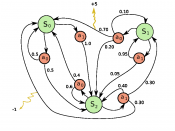Explain how the classical and behavioural theories differ in the terms of management structure and decision making
Two of the most commonly used management theories used in the business world are the "Classical-Scientific" and "Behavioural" theories. These theories vary greatly in the way they are structured and also the way they make decisions within the business - in particular employee involvement in the decision making process.
Classical-Scientific Theory
The classical-scientific management theory is based on the belief that employees will do what they are told, when they are told with asking any questions - as if they were robotic. The view taken was that the harder employees worked, the more money that would be generate for the business.
A business using this theory would be structured as a multi levelled hierarchical system. It comprises of many department heads, that lead each level on the pyramid - the highest boss of all being the Chief Executive Officer (CEO) on top of the chain of command.
(See Fig 1.1)
Fig 1.1 Example of a Classical-Scientific Structure
(Draw in Lines)
The use of so many levels of management can disrupt how a business is run. Whilst the CEO is the "big boss" he is there to oversee the business running, and orders from him have to be passed down through many stages. The managers for which the message was originally intended may not get the message in its entirety or in some instances may not even get it at all!
The way decisions are made is very simple, the CEO as dictator makes the decisions on what is best for the company and also in relations to things that may lead to the achievements of goals set out in the tactical, operational or strategic planning phases.
The management of each level...


